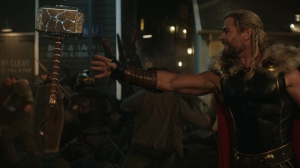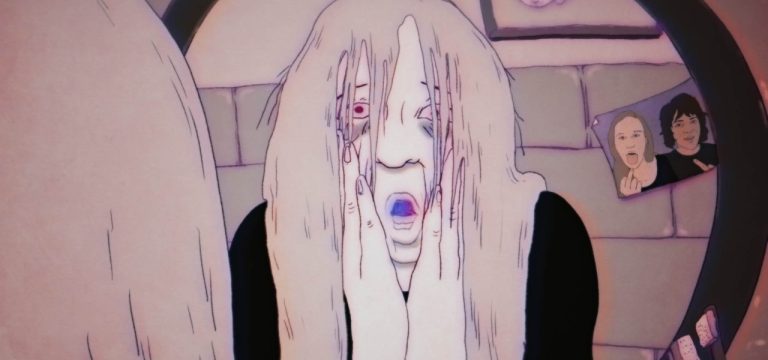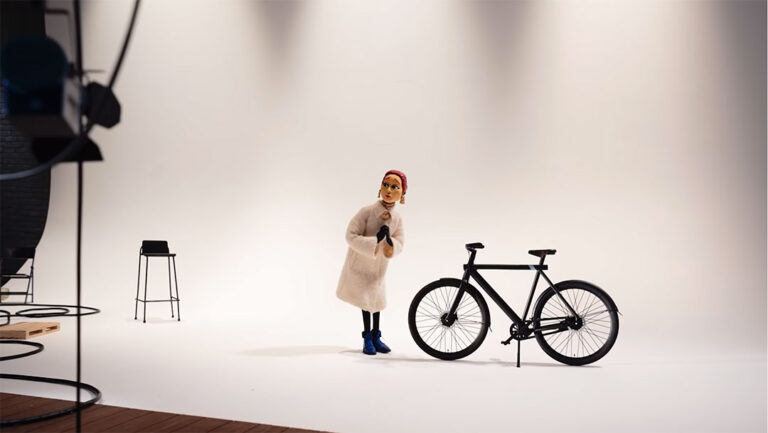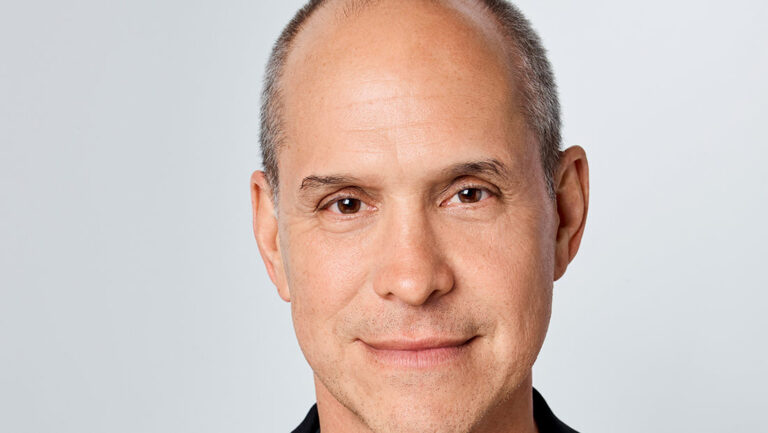Meanwhile, in the non-feline-centric world, which is, generally speaking, most of the MCU, Morrison recently served as both VFX supervisor and second unit director on the Taika Waititi-directed Thor: Love and Thunder, the fourth entry in the blonde Norse god franchise. In the latest, some would say “light-hearted,” installment of the Thor saga, the God of Thunder (Chris Hemsworth) on a journey of self-discovery, sees his efforts interrupted by Gorr the God Butcher (Christian Bale), who, not surprisingly, seeks the extinction of the gods. To combat the threat, Thor enlists the help of King Valkyrie (Tessa Thompson), Korg (Taika Waititi), and ex-girlfriend-turned-Mighty-Thor Jane Foster (Natalie Portman), who pool their resources to stop the galactic killer before it’s too late.
But the most useful thing was that, since all the real sets are created in CAD before they’re actually built, we were able to bring them in and look at them with the virtual reality gear. For example, for the village that we built in New Asgard, Taika and I and [the] DP [Barry Idoine] were flying around the village finding different vantages, and doing sun tests – like, “If we put the bluescreen there, at the time of day we’re shooting it, will the sun be able to get through here, or will we be creating shadows because of the bluescreen ball?” It was that sort of level. That was the revelation for me – I’ll use it on every film from now on.
JM: I don’t mind a bit of Zappa. But we got her in the Valley, so that’s why she’s a Valley girl.
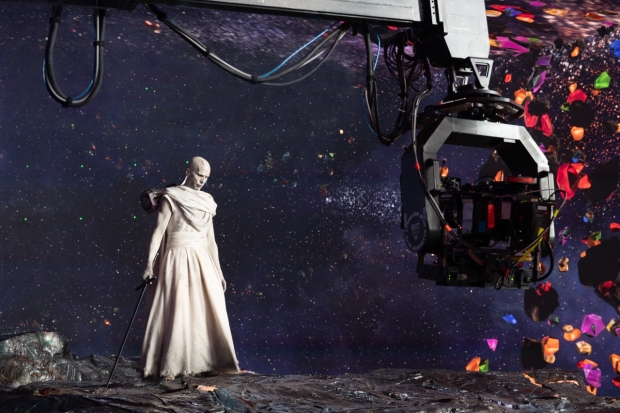
JM: You have to bear in mind that each director is required to make hundreds of decisions a day. And somebody says, “How about this?” and they go, “Yeah, fine.” Then, behind the scenes, 50 or 100 people go into action, budgets get approved, things get built. And then the director shows up and goes, “Oh no, actually this is a better angle.” That is a tremendous amount of waste. So, yes, I think this is going to stop a bit of that. It won’t stop all of it, because when you block the scene with actors, it never quite goes the way that you expect. But then you can build it in post.
But to get to that stage, we still wanted to go and do some scouting. So, we ended up using an amazing virtual reality rig, where there were four sterilized headsets hung from the ceiling. And we would each sit in our little swivel chairs and plug in, and then we would drop into an environment that we were planning to build. And all the tools are there to fly around, look at stuff, take pictures. We had our full lens kit – what we were going to use with the live-action – so you could actually frame things up and look at different angles and make adjustments. We did that for all the LED volume stuff.
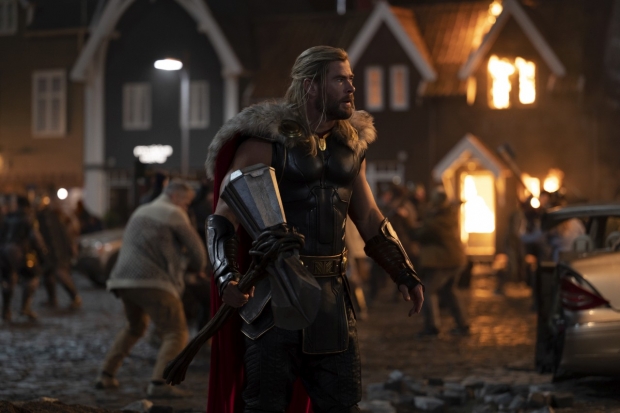
You get the ability to take all the background action that’s going on – which is to say all the floating debris and rocks and dust and everything – and punch cool light through that, and cool shadows, and have that wheel sympathetically with what’s happening on the actor. And then, when you have that lightning strike or hit, you’re not making a CG version of the character. You’re literally just pulling in from the light right here because light’s additive. You’re just kissing in what that needs to be. That’s something I’ve been chasing for years.
For Morrison, no less than the superheroes, Thor: Love and Thunder was an exciting and often challenging adventure, although his experience was defined more by the extensive use of VR and a breakthrough in lighting tech than by impending deicide. We’ll let him tell you about it.
First things first: Jake Morrison may be a highly accomplished visual effects supervisor – whose credits include Thor: Ragnarok, Ant-Man, The Avengers, The Other Guys, and Iron Man 2 – but make no mistake about it: he’s also a cat lover, whose feline charges have accompanied him to far-flung locations throughout the known world. The reason we know this is that he told us. And the reason he told us is that it’s hard to avoid discussing such things when the pets in question are vying for screen time during a Zoom interview. More on that later.
DS: Right. It seems that the more these tools are available for you to use, the better and more informed the decision making can be.
Dan Sarto: Aside from being produced during the pandemic, how did Love and Thunder compare to Ragnarok in the way you approached the visual effects production?

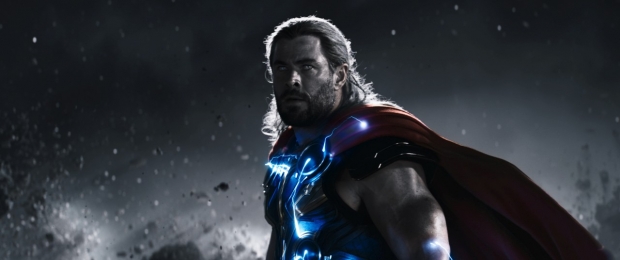
DS: That was a funny moment, the dumpling with a face. One of many funny moments in what was quite a funny film. Which leads to my last question: Taika currently so busy, working in so many different ways, telling so many different types of stories. Tell me a little bit about your working dynamic.
DS: It seemed like great fun on the screen. Thank you very much for sharing your experiences and insights – and your cats. I’m down to three, by the way. I had six until a couple of years ago. We just lost the oldest cat we ever had; 19 years old.
Same thing for the Golden Temple – no two gods should look the same. But it’s the Pantheon, and there are going to be thousands of gods in there as they walk in, and holy shit. And you get that Steadicam shot as you look around and see the whole 3D version of that. And Taika’s request was that every single one of those gods had to be different, which again, from a purely artistic point of view, let alone a technical one, is a truly amazing challenge. And then every now and again, he threw out a special one, like, “God of Dreams.” And they were like, “What’s the God of Dreams?” “Big frigging eyeball.” “Okay. There’s a big frigging eyeball.” Or “What about the God of Dumplings?” “What’s the God of Dumplings?” “Just a dumpling with a face.”
After we built that village, New Asgard, our environmental team went through and took 295 high-resolution scans and LIDARs, captured the entire thing. And then, when we finally got to additional photography, they said, “You know what, we’d really like to do a scene with Thor and the hammer and Natalie, when Stormbreaker comes in at the end.” We call it the “barrel scene,” because the hammer’s on a barrel, and he’s standing in front of the shopfront. None of that existed. That was a barrel with a bluescreen we shot outdoors, and then everything you see behind them – which looks entirely like we shot it on location in Sydney – was all done back in Los Angeles on a 30-foot square, and that’s just pulling the photography. Because we built the thing for real, we were able to pull that forward, and then put them against those textures.
I’ve been dealing with that for so many years that we actually came up with a solution. We used this brand-new technology. Imagine that you could shoot an actor with six different lighting setups, simultaneously, and then you can choose from them later. Nobody’s ever been able to do that before. It’s the same folks that did the Valkyrie flashback on the last Thor. They can work really well with light and camera sync. So, over the years, we basically upped the game.
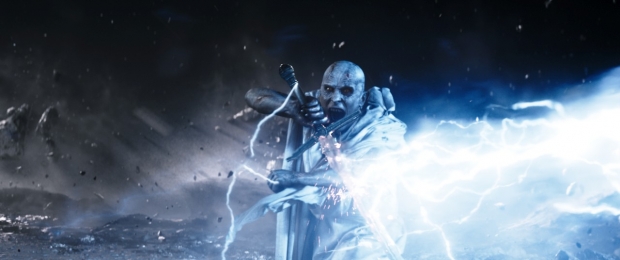
JM: No kidding. Like I was saying before about how somebody, almost capriciously, will come up and say, “What about this?” “Yeah, fine.” And then the roll-down is 200 artists. The place I’ve seen this the most is in action sequences. Let’s say, we’re in the middle of a fight, you come at me, and bang, there’s an explosion. You need some light on me from that explosion. Typically, what we do is make a CG version of me, and light that in CG. And then you try and kiss in a bunch of stuff here, and you avoid the hairline, and you just try to make it look powerful and integrated.
DS: What were a few sequences that were the most challenging from your standpoint? Not necessarily the biggest or the most impactful narratively. When you sat down to break down the film early on, what did you anticipate would be the most difficult, and did it turn out that way?
Jake Morrison: I used more VR on this than I ever have before. We were mostly using LED volumes for interactive lighting on the whole thing. There’s so much prep that you have to do to put up an interactive load, as they call it, for the LED volume work to come through okay. They have this mad technology where you’re in an environment with these 3D Vicon cameras, and you can stick a tracking marker on the back of the actor, and as the camera moves around it will stick a live bluescreen just behind them, but only just behind the bit that you want, which for me is their hair because everything else is roto, and you can do hard edges. So, we used it for a ton of that.
JM: We had two from the pound that made it to 17, and they were super-resilient. Cats are actually really good to bring on location if you have to bring them. The older brothers of the girls we have now went with me to Vancouver, Albuquerque, Atlanta, London, Gold Coast. We would just take them everywhere, because when I go on location, I go there for 10 months. This one [holds up cat] is relatively new to the experience. This is Moon Unit.
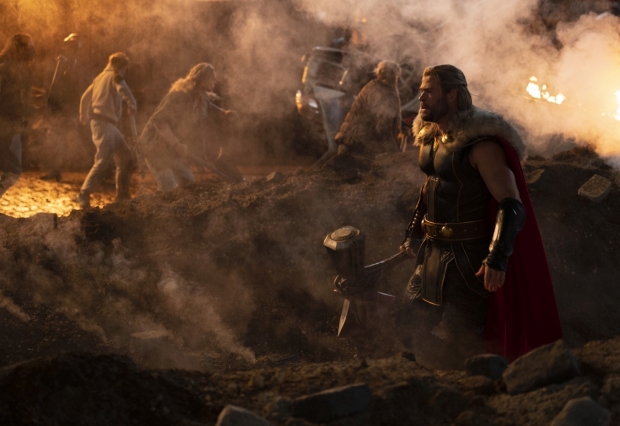
Taika and I were going to do Akira – we did about five months of prep, and it got put on hold. But we’d already worked out some of the tech that we were thinking about using. We built this incredible rig, which is basically six enormous lighting banks made of industrial strength strobes, that are laid out in a particular pattern. And every single frame that you shoot, you can then unpeel a single version of that light. We referred to it as “an undealt.” When you look at the footage, it’s like an undealt stack. You have all of the passes going all the way through. And then in post, we’ll go through and deal it out – lighting one, two, three, four, five, six. You wouldn’t do this for a narrative sequence, but, in an action sequence, you now have the ability to, as Taika requested, cut to cut, which can vary until almost the release. The minute that Taika wants the light to come in, he’s like, “Cut.” And then the light comes in, and it wheels around here and it’s out, cut. We can control that by bringing in one, two, three, four, five lights behind, and just blending among them.
As to be expected, the list of VFX vendors on the film is extensive; it includes Base FX; Cinesite; EDI Effetti Digitali Italiani; Fin Design + Effects; Framestore; ILM; Luma Pictures; Mammal Studios; Method Studios; Outpost VFX; Raynault VFX; Rising Sun Pictures; and Wētā FX.
And then behind the foreground heroes, you’ve got the procedural. And the procedural stuff was a tour de force for Wētā, Method Montreal, and of course, Luma. They all built procedural crowd systems, based upon it not looking like there was a procedural crowd system. I’m like, “We’ve got to have slimy ones, spiky ones, arm-wavy ones, we’ve got to have lobster-looking things.” That was a huge challenge, so take that, shadow creatures!
JM: I’m excited. Of course, eventually it will just become a thing that we do on big action sequences. In five, 10 years, it’ll be like, “Eh, we just do that.”
And, on this one, he also asked me if I’d mind being second unit director. So, I actually directed all the fight scenes, as well as being VFX supervisor on the whole thing. All the stuff with Chris and Natalie and Christian, of course, he directed, because he wants to be there to nail that emotional response. But the real fun stuff, like a bunch of kids fighting with lightning weapons and killing huge monsters, I got to do all of that, so it was great fun.
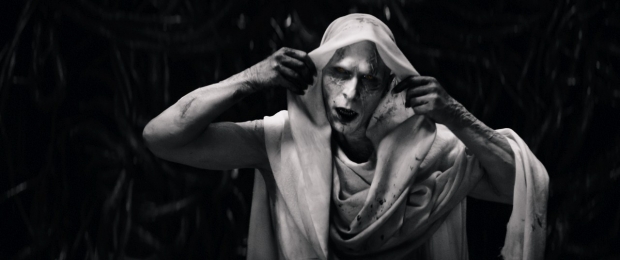
DS: That sounds pretty significant.
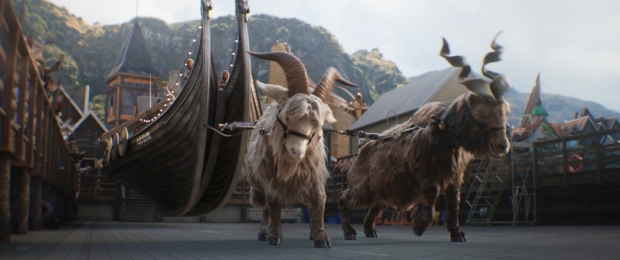
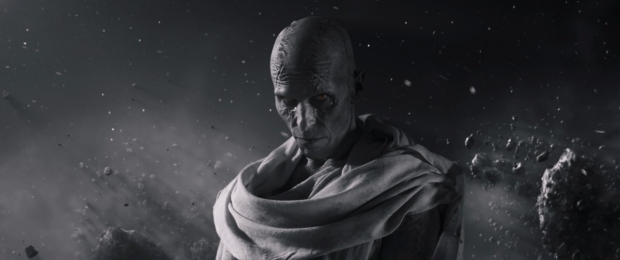
Dan Sarto is Publisher and Editor-in-Chief of Animation World Network.
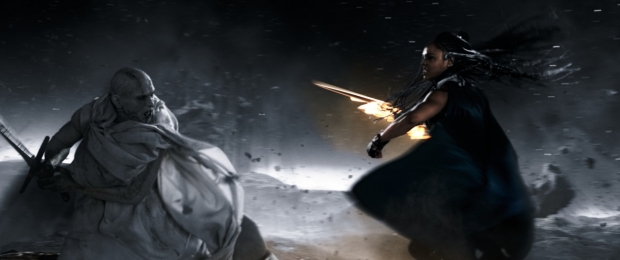
DS: You must be a Zappa fan.
JM: It’s just a lot of trust. I worked with him before on Thor 3, which was the first time we worked together. We got on well. He’s got the wonderful leadership trait, which is if something’s working, just don’t get involved. The thing with visual effects, especially, is they’re slow ships. He doesn’t need to be in dailies, 12 hours a day – he’s got other things to do. But when he needs to – for example, if there are two options that are both cool and he’s not sure which way to go, or he’s thinking about changing something, but it’s really expensive – he’ll talk to me about it.
DS: That must have saved a tremendous amount of resources, to be able to check things out virtually, and know if it’s really what you want or not.
From a character animation point of view, obviously, it’s impossible for every single shadow creature that comes out to be completely unique, so we’d have our hero ones. If you look at, say, Molly’s bedroom, which is the first time you see a shadow creature, there’s a potted plant and there’s a light. When the shadow on the wall starts to stretch out, if you were to follow through that, you would see that the creature that is born from that shadow has the same physical silhouette as the thing that cast it. If I have a spiky plant, the shadow is going to be spiky, and the creature is going to have horns or whatever. So, you basically get to play into it. The shadow from a light behind a bike is going to give you a different creature from the shadow of a chair.

JM: There were two challenges Taika threw at us, and they’re linked in a weird way: the shadow creatures and the Golden Temple gods. And the number one thing he said was, “No copying and pasting.” Which was his way of saying, “You know what? I’ve seen films before. I’ve seen zombie movies. I’ve seen an awful lot of the same bodies moving at the same rate. They all look the same, and maybe one’s got hair and one hasn’t, but they all look the same.”
